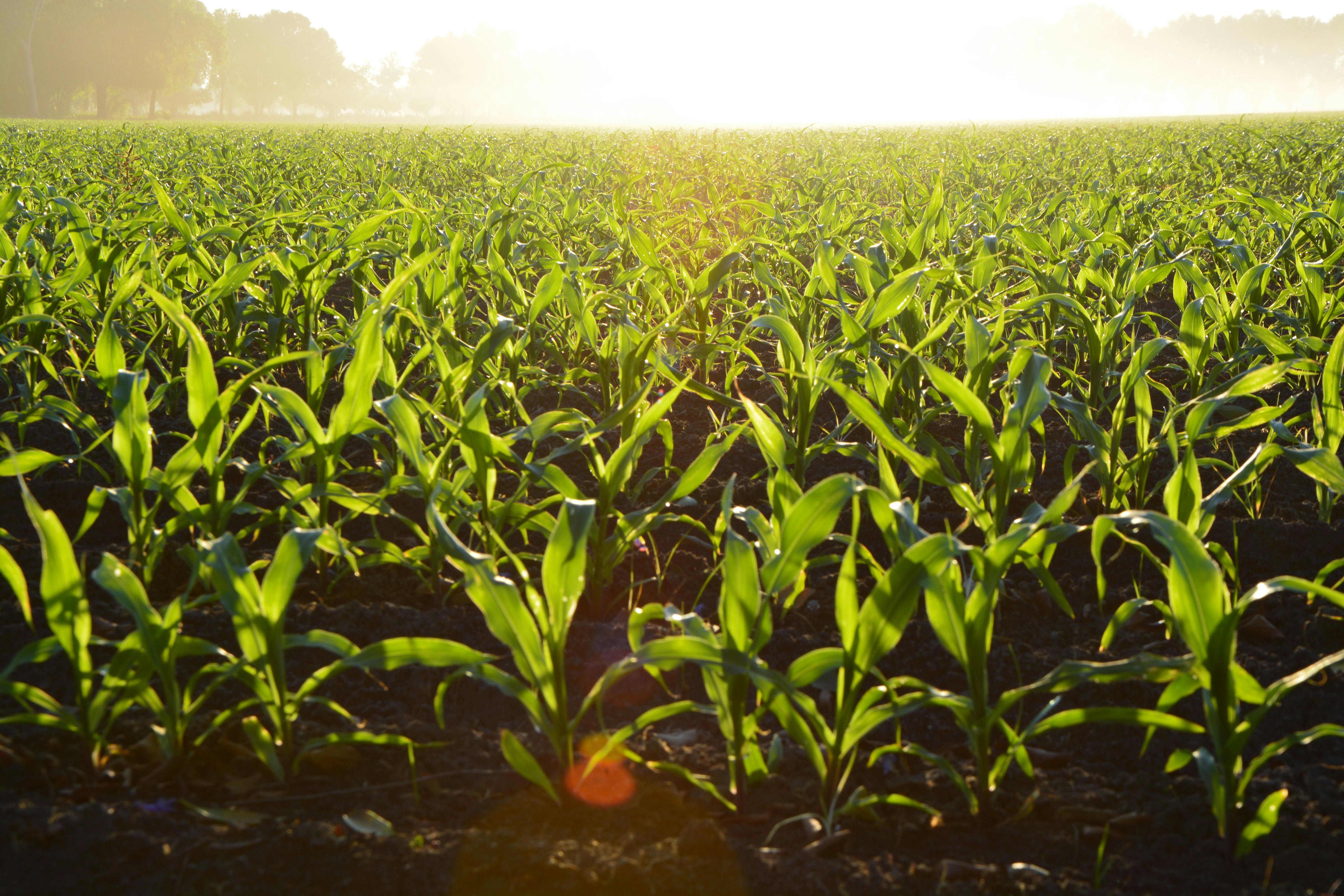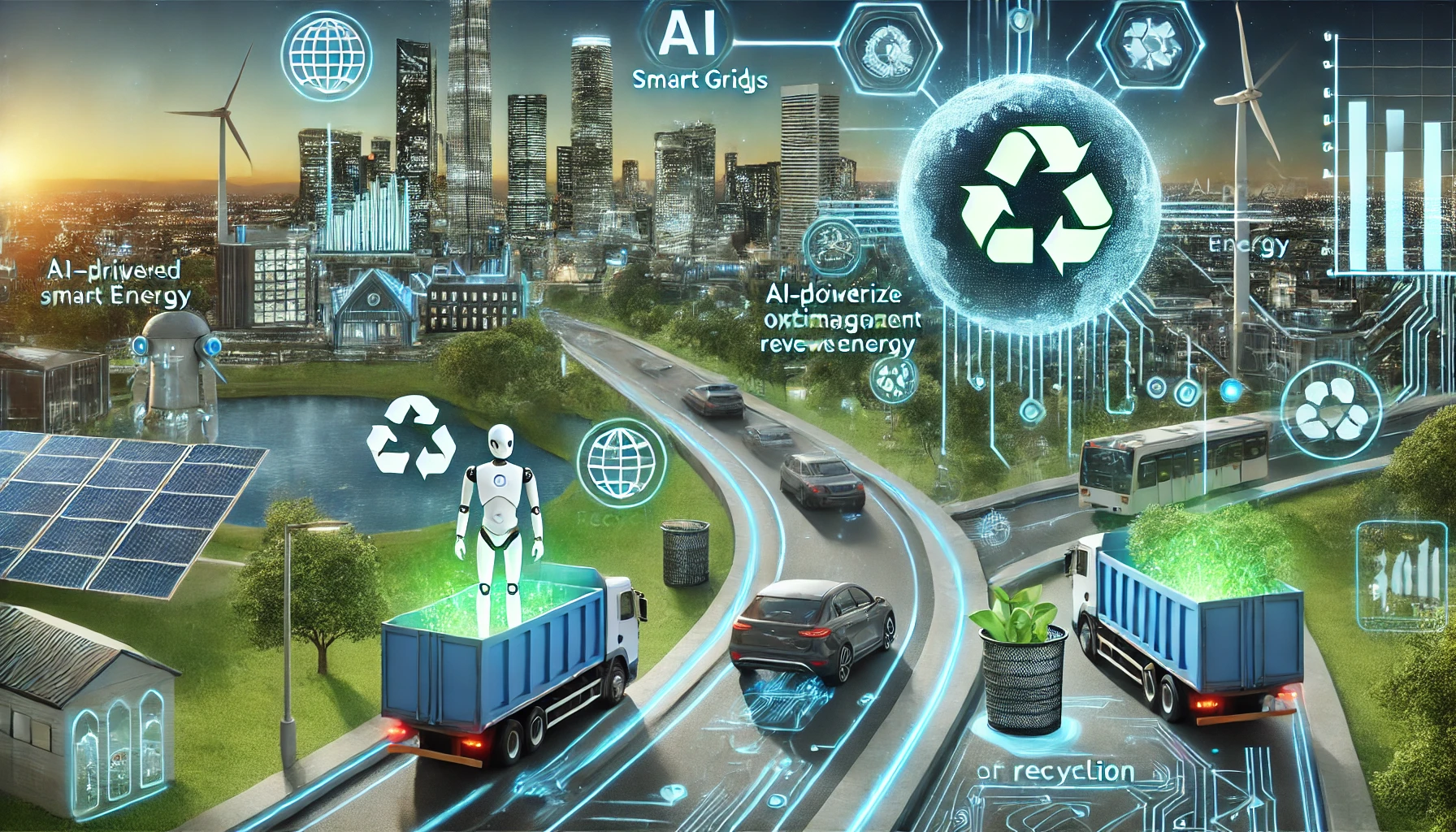Artificial Intelligence (AI) is playing a crucial role in promoting environmental sustainability by optimizing energy use, reducing waste, and predicting climate patterns. AI-powered technologies help businesses and governments develop eco-friendly strategies to combat climate change. In this article, we will explore how AI is contributing to a greener planet.

Image: Green technology with AI integration for environmental monitoring. Photo by Akil Mazumder from Pexels, licensed under Pexels License.
1. The Role of AI in Environmental Sustainability
AI enhances sustainability by:
Optimizing energy consumption in industries and homes through intelligent systems that analyze usage patterns and automatically adjust settings to minimize waste while maintaining performance. These AI systems can reduce energy consumption by 15-30% in commercial buildings and industrial facilities.
Predicting and mitigating climate change impacts using AI models that process vast amounts of environmental data to forecast weather events, sea level changes, and temperature shifts with unprecedented accuracy. These predictions help communities prepare for and respond to climate-related challenges.
Improving waste management through AI-powered recycling systems that can identify, sort, and process different materials more efficiently than traditional methods. Advanced computer vision enables these systems to distinguish between similar-looking materials that would confuse human sorters.
Global Impact: According to the 2024 World Economic Forum report on AI for Sustainability, AI applications could help reduce global greenhouse gas emissions by up to 4% by 2030—equivalent to the annual emissions of Australia, Canada, and Japan combined.
2. Best AI Applications for Sustainability
A. AI in Energy Efficiency
Google DeepMind AI: Optimizes energy use in data centers by predicting cooling requirements and adjusting systems accordingly, reducing energy consumption for cooling by 40%. This technology is now being adapted for use in commercial buildings and manufacturing facilities.
Schneider Electric AI: Uses AI to reduce industrial energy consumption through real-time monitoring and automated adjustments to equipment settings. Their EcoStruxure platform can identify inefficiencies and suggest optimizations that human operators might miss.

Image: AI-powered energy management dashboard monitoring renewable energy sources. Photo by Mikhail Nilov from Pexels, licensed under Pexels License.
B. AI for Climate Prediction and Monitoring
IBM Environmental Intelligence Suite: AI-powered climate forecasting that helps businesses anticipate and prepare for environmental risks. The system processes satellite imagery, weather data, and IoT sensor information to provide actionable insights for risk management.
NASA AI Climate Models: Predicts global warming trends with detailed regional analysis by processing petabytes of satellite data, ocean temperature readings, and atmospheric measurements. These models run simulations that would take decades to calculate using traditional methods.
C. AI in Waste Management and Recycling
AMP Robotics: AI-driven waste sorting for recycling efficiency, using robots equipped with computer vision that can identify and sort recyclables at speeds far exceeding human capability. Their systems can distinguish between different types of plastics, metals, and paper products with over 99% accuracy.
Greyparrot AI: Uses machine learning to analyze and sort trash in real-time, helping recycling facilities increase recovery rates and reduce landfill waste. Their visual recognition system can identify thousands of different waste items and categorize them appropriately.
“AI isn’t just another tool for environmental sustainability—it’s a fundamental paradigm shift in how we understand and manage our impact on the planet. The ability to process and learn from vast amounts of environmental data enables solutions that simply weren’t possible before.” — Dr. Fei-Fei Li, Co-Director of Stanford Human-Centered AI Institute
3. AI and Smart Agriculture for Sustainability
AI-powered precision farming reduces water and fertilizer waste by analyzing soil conditions, weather patterns, and crop needs in real-time. Systems like John Deere’s See & Spray and Microsoft’s FarmBeats use sensors, drones, and satellite imagery to deliver resources only where and when they’re needed.

Image: Drone monitoring crops with AI analysis for precision agriculture. Photo by Digital Buggu from Pexels, licensed under Pexels License.
AI-driven pest detection minimizes the need for harmful pesticides through early identification of pest infestations. Companies like Taranis and Peat (Plantix app) use AI to analyze plant images and identify specific pests or diseases, allowing for targeted treatment rather than broad application of chemicals.
AI-enhanced crop monitoring improves food production sustainability by predicting yields, detecting irrigation needs, and optimizing harvest timing. These systems help farmers produce more food with fewer resources, reducing agriculture’s environmental footprint.
Case Study: The Nature Conservancy deployed AI-powered monitoring systems across 30,000 acres of farmland in California’s Central Valley, resulting in a 20% reduction in water usage while maintaining or improving crop yields. The system used soil moisture sensors, weather forecasts, and crop growth models to optimize irrigation schedules.
4. The Future of AI in Environmental Protection
Environmental technology is advancing rapidly with AI innovations that promise even greater sustainability impacts:
AI-powered smart grids for efficient renewable energy distribution that can balance supply and demand in real-time, integrating intermittent renewable sources like wind and solar more effectively. These intelligent grids can predict energy needs, optimize storage, and reroute power to minimize waste and maximize renewable usage.
AI-driven carbon footprint tracking for businesses and individuals that provides accurate, automated measurement of environmental impact across complex supply chains and daily activities. Companies like Watershed and CarbonChain are developing systems that can track emissions at the product level with minimal manual input.

Image: AI-powered wildlife monitoring system protecting endangered species. Photo by Mikhail Nilov from Pexels, licensed under Pexels License.
AI-enhanced wildlife conservation monitoring to protect endangered species through automated tracking and anti-poaching surveillance. Organizations like Conservation X Labs and RESOLVE use AI-equipped cameras and acoustic sensors to monitor wildlife populations and detect threats in real-time, even in remote areas.
“The climate crisis demands action at a scale and speed that humans alone cannot achieve. AI doesn’t just help us understand environmental problems—it helps us solve them faster and more effectively than ever before.” — Christiana Figueres, Former Executive Secretary of the UN Framework Convention on Climate Change
Balancing Technology and Environmental Impact
As we deploy AI for environmental sustainability, we must consider important trade-offs:
Energy consumption of AI systems: Advanced AI models require significant computing power, creating their own carbon footprint. Researchers and companies are developing more energy-efficient AI architectures and powering data centers with renewable energy to address this concern.
Ethical sourcing of materials: AI hardware requires rare earth minerals and other materials that must be sourced responsibly to avoid creating new environmental problems while solving others.
Access and equity: Ensuring that AI-powered environmental solutions benefit all communities, not just wealthy regions with abundant technological resources.
Conclusion: AI as a Catalyst for Environmental Change
AI is revolutionizing sustainability by making energy use more efficient, improving waste management, and helping predict climate changes. With AI-driven innovations, we can create a greener and more sustainable future that balances human needs with environmental protection.
The most promising aspect of AI for sustainability is its ability to optimize complex systems at scale—finding efficiencies and solutions that would be impossible through human analysis alone. By processing billions of data points and learning continuously, AI can help us address environmental challenges with unprecedented precision and effectiveness.
While AI alone cannot solve our environmental challenges, it serves as a powerful multiplier for human efforts, accelerating our transition to more sustainable practices across industries and societies.
Embrace AI-powered sustainability solutions today for a cleaner planet!
What environmental challenges do you think AI could help solve in your community? Share your thoughts in the comments below.

